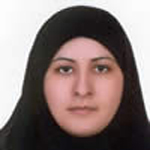Lived Experience of Elementary School Teachers about The Opportunities and Challenges of Teaching in the Educational Network of Students (SHAD): A Phenomenological Study
Author(s):
Article Type:
Research/Original Article (دارای رتبه معتبر)
Abstract:
The new coronavirus (COVID-19) pandemic has complicated state of affairs around the world. Originating from the Wuhan’s China in mid-September, COVID-19 has gradually spread to all countries across the world. The World Health Organization issued a statement declaring the outbreak of coronavirus to be a public health emergency that posed a threat to the entire world. Although different age groups and social classes are threatened by COVID-19, care for and control of educational environments have been amongst the first safety measures of the crisis-stricken countries due to the student high population, high classroom density, use of shared spaces and facilities and, in turn, health consequences and high probability of transmitting the virus through this group to all members of the community. Million children and young people were forced to drop out of school due to widespread closure of educational institutions by governments to slow down the spread of coronavirus. Some countries closed all schools resulting in negative impacts on students in pre-school to senior high school levels. Following the crisis of coronavirus in different parts of the world, the outbreak of the disease in Iran was officially confirmed on February 20th, 2019. Considering the high population of Iranian students, shortly after the outbreak of coronavirus in the country, schools faced closure. However, government's motto during the shutdown was that although schools and universities are closed, but teaching and learning continues. Accordingly, various strategies were designed to continue educational and research goals, mainly based on cyberspace and distance learning. In this way, the Students Educational Network (SHAD) was launched by the Ministry of Education to organize the students' virtual education. SHAD is similar to real schools in the structure; i.e. students can enter their virtual classrooms and teacher carries on and monitors the process of teaching and learning according to the class timetables set by the principal. Moreover, school principals and administrative staffs are responsible for monitoring virtual classrooms and the students' attendance in the classes. Teaching lessons by the teachers constituted the main content of the virtual education on SHAD, but the teachers have been free to choose the appropriate educational content and resort to: the recorded TV educational programs uploaded on Telewebion for about a month, contents offered by the Roshd network affiliated with the Organization for Educational Research and Planning (OERP), sharing contents with other educational groups, using programs developed by educational groups and the curriculum secretariats, etc. Despite offering promising educational prospects of distance learning, SHAD has also posed certain challenges for the teachers. Their most important criticism was related to the application's technical infrastructure, especially its low speed Acknowledging the drawbacks of SHAD, some education experts have referred to the opportunities of this network including: motivating teachers to use technology, identifying and introducing capable and creative teachers, sharing the experiences and knowledge of capable teachers, expanding educational justice by sharing educational contents from/to different parts of the country, being an official network for monitoring different levels of education, creating opportunities to empower teachers and turning school principals into policy makers, as well as identifying efficient and inefficient school principals. Despite the identification of positive and negative outcomes of SHAD in various journals, there is a lack of comprehensive studies on the issue and scientific investigation on the application. Therefore, the present study tried to, objectively and regardless of any judgment, uncover and represent the perceptions and beliefs of teachers regarding the opportunities and challenges of primary education in the Students Educational Network (SHAD). The study reconstructed the semantic understanding of teachers about strengths and challenges of teaching in the SHAD network through phenomenological approach. Semi-structured interviews conducted on 21 teachers. Due to the fact that this study was conducted during the outbreak of coronavirus and during the quarantine period of the disease, all interviews were conducted on the phone. Each interview lasted 45 to 60 minutes. Although qualitative interviews with a limited number of participants cannot be statistically generalizable to the wider population, it serves to dispose hidden and generally forgotten layers and aspects in education. The results of the present study revealed a host of teacher problems when teaching on SHAD, which requires intelligent development and restoration by related organizations. In sum, in-depth analysis of teachers' opinions eventuated in the identification of 10 strengths in two categories of teacher-centered and student-centered strengths and nine challenges in the three categories of infrastructure and technical challenges, challenges created in the teaching-learning process and socio-cultural challenges. Benefits of virtual classes including compensating for school lost days during quarantine days; increasing parental responsibility and engagement with students' teaching-learning process; increasing the teaching speed of new and updated information; motivating teachers to promote media literacy; recognizing capable and creative teachers; providing a platform for teachers to share files and experiences; increasing teachers' responsibility to study more; to be appealingand motivating for students to use; making students interested in up-to-date knowledge and research; flexibility in classroom time and the elimination of costly traffic; and fostering creativity in students to present assignments in unique ways. In addition, nine deficiencies were revealed that can be improved including lack of access to cyberspace for some students especially in disadvantaged areas that creates inequality in education opportunities; high internet costs for many families; slow internet speed; difficulty in measuring students' real learning and teachers' deprivation of their complete supervisory; internet and cell phone addiction in some students; inappropriate use of other people's content; teachers' negligence in teaching and assessment; using SHAD application for advertisement; motivation reduction in some students to study in this new way of learning. Taking these challenges and opportunities into account, SHAD can be applied as a good supplement to the traditional education after the reopening of the schools. Given the school shutdown and the continuation of formal education through cyberspace, it seems that distance learning (e-learning) might become a crucial element in future education systems which warrants governments' attention. Employing virtual teaching in tandem traditional schooling guarantees learning in students. Combining the strengths of both face-to-face and online learning methods, which is known blended learning or the 21st century strategic approach, has the potential to improve the quality of students' learning.
Keywords:
Language:
Persian
Published:
Research in Teaching, Volume:8 Issue: 3, 2020
Pages:
1 to 24
magiran.com/p2228344
دانلود و مطالعه متن این مقاله با یکی از روشهای زیر امکان پذیر است:
اشتراک شخصی
با عضویت و پرداخت آنلاین حق اشتراک یکساله به مبلغ 1,390,000ريال میتوانید 70 عنوان مطلب دانلود کنید!
اشتراک سازمانی
به کتابخانه دانشگاه یا محل کار خود پیشنهاد کنید تا اشتراک سازمانی این پایگاه را برای دسترسی نامحدود همه کاربران به متن مطالب تهیه نمایند!
توجه!
- حق عضویت دریافتی صرف حمایت از نشریات عضو و نگهداری، تکمیل و توسعه مگیران میشود.
- پرداخت حق اشتراک و دانلود مقالات اجازه بازنشر آن در سایر رسانههای چاپی و دیجیتال را به کاربر نمیدهد.
In order to view content subscription is required
Personal subscription
Subscribe magiran.com for 70 € euros via PayPal and download 70 articles during a year.
Organization subscription
Please contact us to subscribe your university or library for unlimited access!




